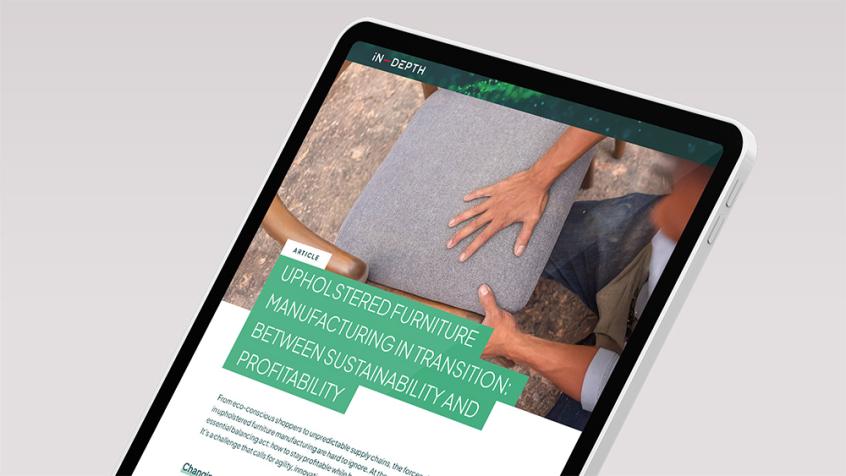Blurring the contract-residential divide
The future of the home office is multifunctional and modular. Sales of home office furniture have increased dramatically since the beginning of the Covid-19 pandemic and they will continue to stay strong as remote/hybrid work becomes the norm.

Post-pandemic, more and more employees want workplaces that are comfortable and feel like home
At the same time, requirements for the 21st century office have changed. The resimercial style (which was already popular with companies like Apple and Google) is becoming the norm in smaller companies too. In addition to comfort, flexible open collaboration spaces are another element of resimercial designs. Furniture for these spaces also needs to be modular and movable to accommodate and encourage collaboration.
How to produce contract and residential furniture profitably
The boom in home office sales as well as the rise in the resimercial style offers new opportunities for business growth for contract furniture manufacturers. Companies that want to capitalize on these trends may need to redesign their furniture to offer the aesthetic, size, scale, lead times and ease of installation that residential customers expect. Companies may also need to reimagine their production methods, workflows, and even their IT systems.
How can contract furniture manufactures transform their production processes while maintaining the stability and revenue of their core business activities? In our e-guide, Blurring the contract-residential divide, we discuss the differences between producing contract and residential furniture, as well as the technology solutions available to make it easier for companies to produce for both markets.
What is resimercial design and why is it so popular?
The resimercial aesthetic is a counterbalance to the stark office environments of the past.
A combination of the words residential and commercial, resimercial style brings aspects of home into the professional workspace. There is no one-size-fits-all to this design but it usually incorporates elements such as comfortable seating, large pillows and commercial upholstery with a more colorful, creative feel.
Research has shown that people are more productive when their workspace is comfortable and provides a feeling of happiness. Resimercial design contributes to a more pleasurable work experience and helps companies recruit and retain workers.
What are the differences between contract and residential furniture?
As commercial interior design has begun to draw inspiration from residential interiors, one could wonder whether there is really a difference between residential and commercial furniture.
In fact, there are two key differences between the two types of furnishings: design (seat heights, seat depths, longevity...) and construction (frame, foam, fabric...).
How can Lectra help contract furniture manufacturers seize growth opportunities?
1. Improve agility
Flexibility is the focus for those who want to succeed in producing functional office furniture for any environment. Lectra’s digital design and development solutions enable companies to accelerate the iterative design process, enabling faster creation of variants that can be adapted to the consumer or contract markets. Once designs are decided upon, companies can develop a complete range of upholstery configurations using data from a master model.
Pattern characteristics can also be optimized with respect to materials, upholstery techniques and marker-making production strategies, allowing manufacturers to prepare and organize large quantities of pattern data for automatic cutting.
2. Maintain profitability
Using an advanced virtual prototyping and product development solution can help contract furniture companies maintain profitability when working with corporate clients. Companies can assess each new design or variant for the cost-effectiveness of sewing and assembly plans, as well as other technical specifications in order to optimize the chosen design for production readiness. Information gleaned from customized cost studies and technical documentation will allow them to improve preliminary costing and answer RFQs faster, with greater accuracy.
3. Achieve consistent quality
A fully digital manufacturing process enables the standardization of processes and reduced reliance on skilled labor. Using digital patternmaking software allows companies to digitize templates and import patterns for verification and adjustment to ensure repeatability during production.
4. Attain environmental and social responsibility goals
As businesses and consumers become more aware of the impact their purchases can have on the environment, more and more are looking to buy not only products made using environmentally sustainable practices but also from companies that implement socially responsible practices as well.
Lectra’s advanced software and cutting solutions are designed to help furniture manufacturers achieve sustainability targets by optimizing material consumption, eliminate production of defective pieces, and increase use of long-life consumables.
Read our e-guide
Find how contract furniture companies can capitalize on new growth opportunities
Related content









